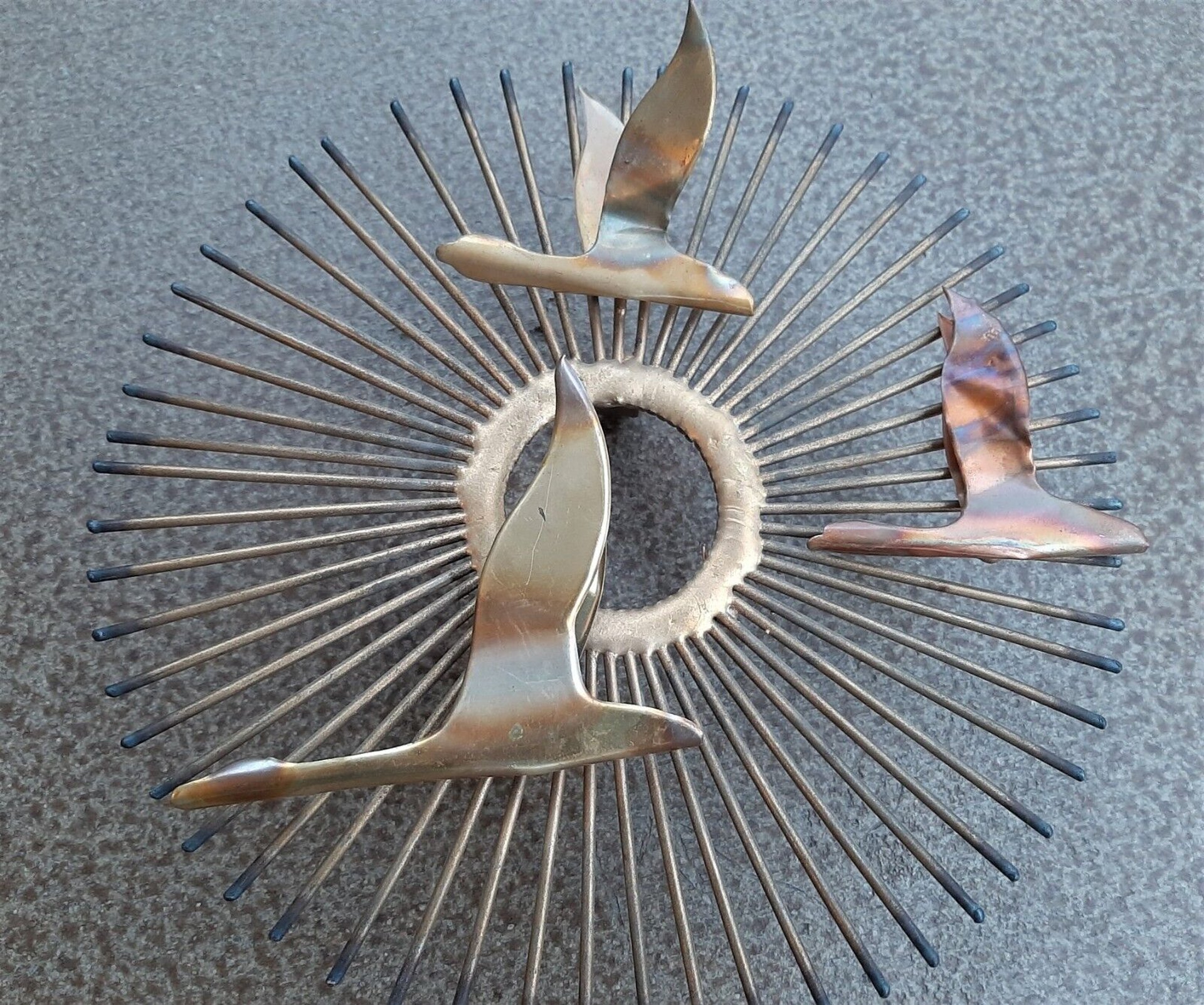
Shopping thrift stores, flea markets and estate sales can be overwhelming. With the sheer volume of stuff, how do you know where to start? How do you spot gems amid all the … well, junk?
As a professional reseller who has been combing through thrift stores for the better part of 30 years, I can help. If you’re ready to cut your shopping time in half, score bigger bargains and walk away with brag-worthy finds you can flip for cash, read on.
From hard-to-find household items to resale money-makers, everything featured in my “Thrift Shop Like a Pro” series qualifies as a BOLO (Be On the Look-Out for) item. When you find it, buy it!
Featured find: vintage Curtis Jeré sculptures
I hesitated adding Curtis Jeré sculptures to this series because I hadn’t found one in the wild in more than a year… and then I promptly found the piece pictured above. So, hope (and legwork) springs eternal. These mid-century gems are still out there waiting to be discovered in thrift shops and the dusty attics of estate sales.
The Curtis Jeré brand is a mash-up of two names — Curtis (Kurt) Freiler and Jerry Fels. Artists and brothers-in-law, Freiler and Fels wanted to bring gallery-quality art to the public. In 1963, they began working together to design cast metal and resin sculptures that would be branded as Curtis Jeré (pronounced with a French flair as zhair-AY) and distributed through their new company, Artisan House.
Decidedly mid-century in style, the company’s work was also brutalist — stemming from the French word for raw, “brut” — a design aesthetic that favored large, exaggerated forms and elevated the raw materials used to create art. Brutalism began as an architectural movement in the 1950s and eventually influenced other forms of design.
Along with the Curtis Jeré brand, Artisan House was sold in 1972. Today, the company reproduces classic Jeré sculptures and new designs. However, in the secondhand market, vintage pieces from the late 1960s and ’70s are most in-demand.
Why buy it?
Like Eames furniture and Russell Wright dinnerware, Jeré sculptures have become icons of mid-century design. Authentic works get noticed because of their scale, craftsmanship and design sophistication. And though many home stores now sell imported items inspired by Jeré, adding a genuine piece to your home provides bragging rights (especially if you find one for pennies on the dollar in a thrift store).
Even better, vintage Curtis Jeré sculptures continue to appreciate in value. Over the past 10 years, I’ve watched resale prices steadily climb as new buyers gobble up the dwindling supply of mid-century inventory.
On eBay, this 58-inch wall sculpture entitled “Birds in Flight” recently sold for $1,700, and this tabletop owl sculpture sold for $400. On Etsy, prices for Jeré pieces tend to be even higher. This wall-mounted 54-inch tree sculpture is listed for $1,995, and this brass eagle sculpture can be yours for $1,795.
What to look for
The world of vintage Curtis Jeré sculptures is complicated for two reasons. First, the brand “Curtis Jeré” is often added to online auction listings in order to bump up non-Jeré items in search results. This process is called “keyword spamming” and though frowned upon by sites like Etsy and eBay, it’s difficult to control. If you’re researching comparable prices, it’s helpful to know that many mid-century-style brass, copper and bronze sculptures are often purposely misattributed to Jeré.
The second complication relates to the Jeré signature. Authentic signatures are either handwritten in black ink directly onto the metal or incised into it. Ink signatures are far more common and typically include the copyright symbol followed by “C. Jeré” and the year of production.
Because the ink mark is so easy to replicate, some unscrupulous resellers add it to any metal sculpture that looks vaguely mid-century. Avoiding these pieces takes a bit of practice and close examination of the style, welds and surface finish.
Pro tip: Sadly, many Jeré pieces have fallen victim to the spray-painting craze. If you find a piece that looks right, it may be worth the time and trouble to strip the paint (though any ink signature will likely be lost in the process). YouTube offers several tutorials on safely removing latex paint from metal.





Add a Comment
Our Policy: We welcome relevant and respectful comments in order to foster healthy and informative discussions. All other comments may be removed. Comments with links are automatically held for moderation.